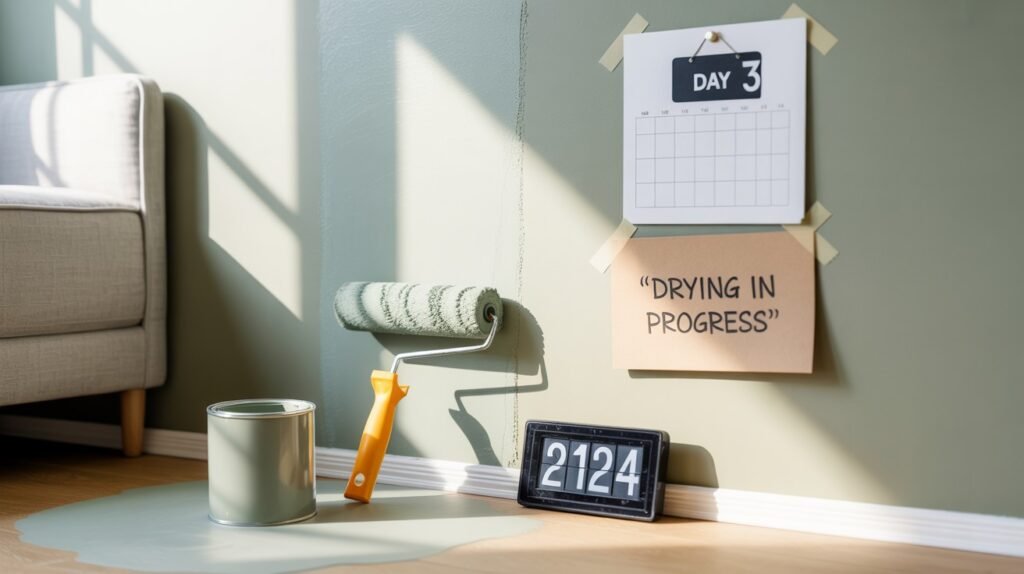After painting countless rooms, I’ve learned that drying time plays a big role in how your walls turn out. A surface might look dry, but touching it too soon or moving furniture back can lead to smudges, streaks, or peeling paint.
I’ve made that mistake myself in the early days. That’s why knowing exactly how long interior paint takes to dry can make all the difference between a flawless finish and a frustrating do-over.
In this guide, I’ll share what I’ve learned about drying times, when to apply a second coat, and how things like temperature, airflow, and humidity impact the process. If you’re planning a DIY paint project or refreshing a room, these tips will help you get smooth, lasting results and avoid setbacks.
Average Drying Times for Interior Paint

When planning your painting project, understanding timing is crucial for achieving professional results.
Different paint formulations have vastly different drying schedules, and knowing these timeframes prevents costly mistakes.
Latex Paint Timing
Latex paint offers the fastest turnaround for most interior projects. You can expect the surface to feel dry to the touch within 1-2 hours under normal conditions.
However, wait at least 4 hours before applying your second coat. This timing allows the paint to bond properly without lifting or creating texture issues.
Oil-Based Paint Schedule
Oil-based paints require significantly more patience. These formulations take 6-8 hours to dry to the touch, and you’ll need to wait up to 24 hours before recoating.
While this extended timeline might seem inconvenient, oil-based paints offer superior durability and finish quality for high-traffic areas.
Understanding the Three Stages of Paint Drying
Not all “dry” means the same thing. Here’s what each stage means for your project:
- -Dry to the Touch- means the surface won’t transfer paint to your finger when lightly pressed. The paint film has formed but remains vulnerable to damage.
- -Recoat Time- indicates when the surface can safely accept another layer without compromising adhesion or causing the underlying coat to lift.
- -Fully cured- occurs when the paint reaches maximum hardness and durability. This process takes 30 days for most interior paints, regardless of type.
Factors That Affect Interior Paint Drying Time
Several variables can dramatically impact how quickly your paint dries, sometimes doubling or halving the expected timeframe.
Understanding these factors helps you plan accordingly and avoid common timing mistakes.
A. Type of Paint Used
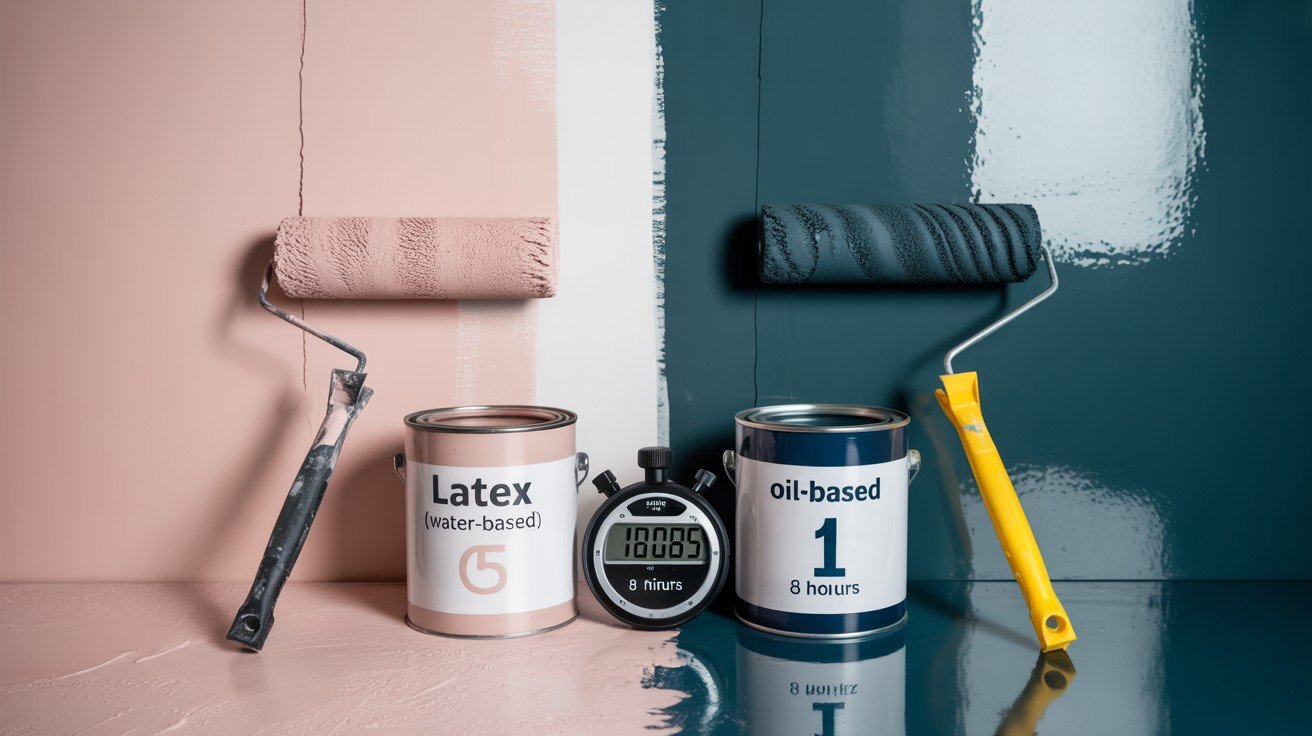
Water-based paints dry through evaporation, making them faster to cure, while oil-based paints dry through oxidation, requiring more time for chemical reactions to complete.
Specialty finishes like high-gloss and enamel contain additional resins and binders that extend drying times but provide superior durability and sheen.
B. Humidity and Temperature
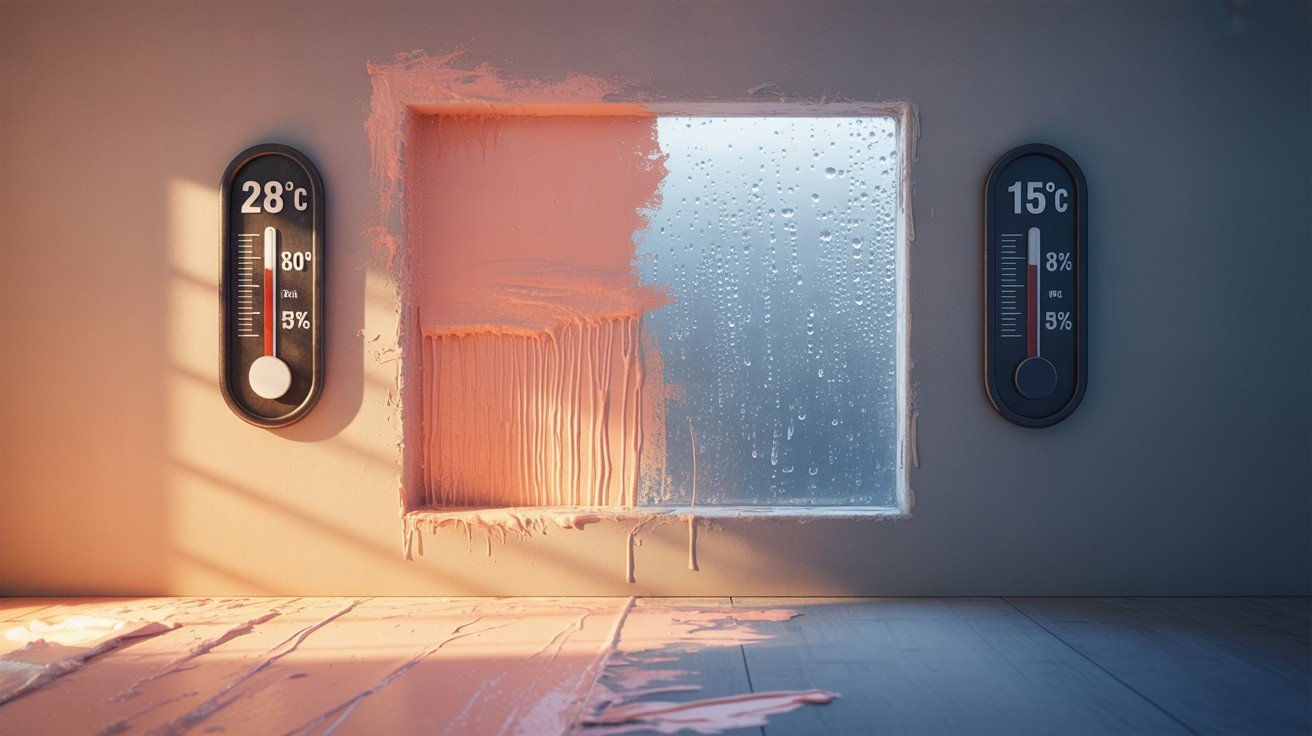
The ideal temperature range for paint drying falls between 50°F-85°F (10°C-30°C), where chemical processes occur at optimal rates.
High humidity slows evaporation and can trap moisture in the paint film, while extremely dry conditions accelerate drying but may cause cracking or poor adhesion.
C. Ventilation
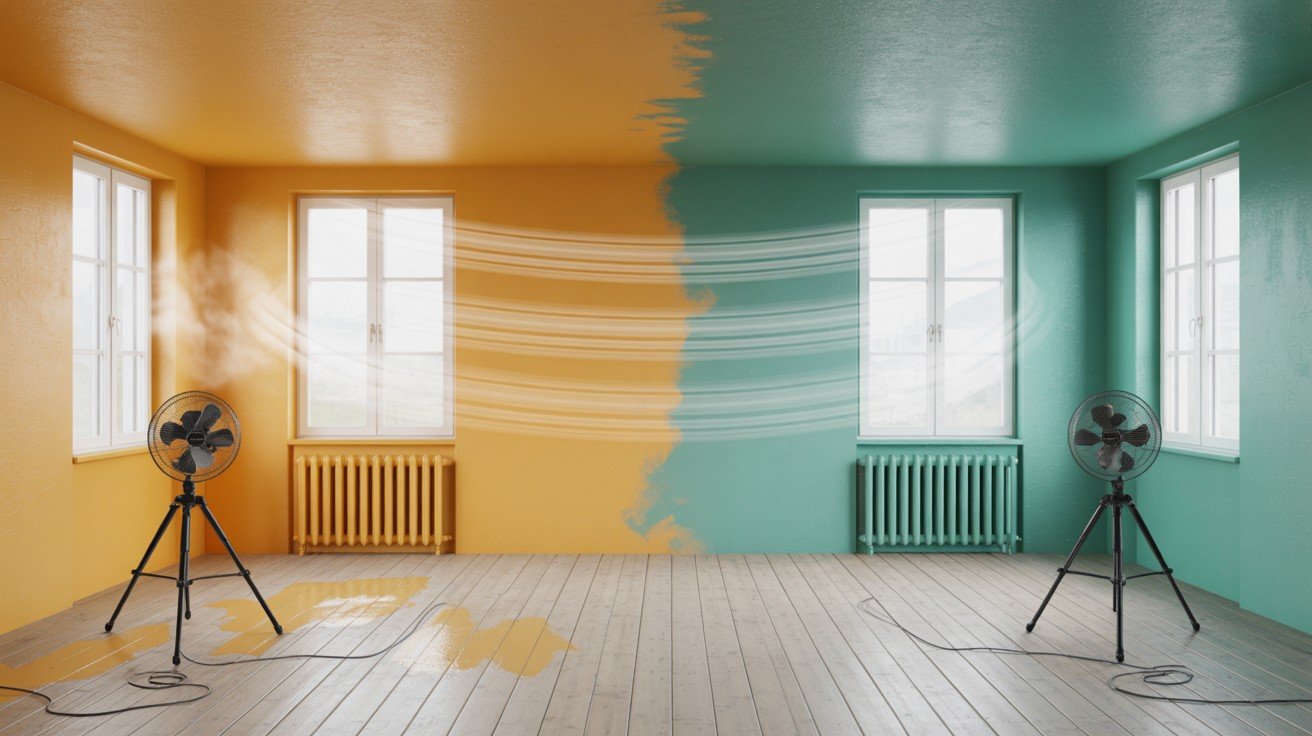
Proper air circulation removes moisture and solvent vapors from the painted surface, significantly reducing drying time.
Open windows, position fans to create cross-ventilation, or run your HVAC system to maintain consistent airflow throughout the drying process.
D. Surface Type and Prep
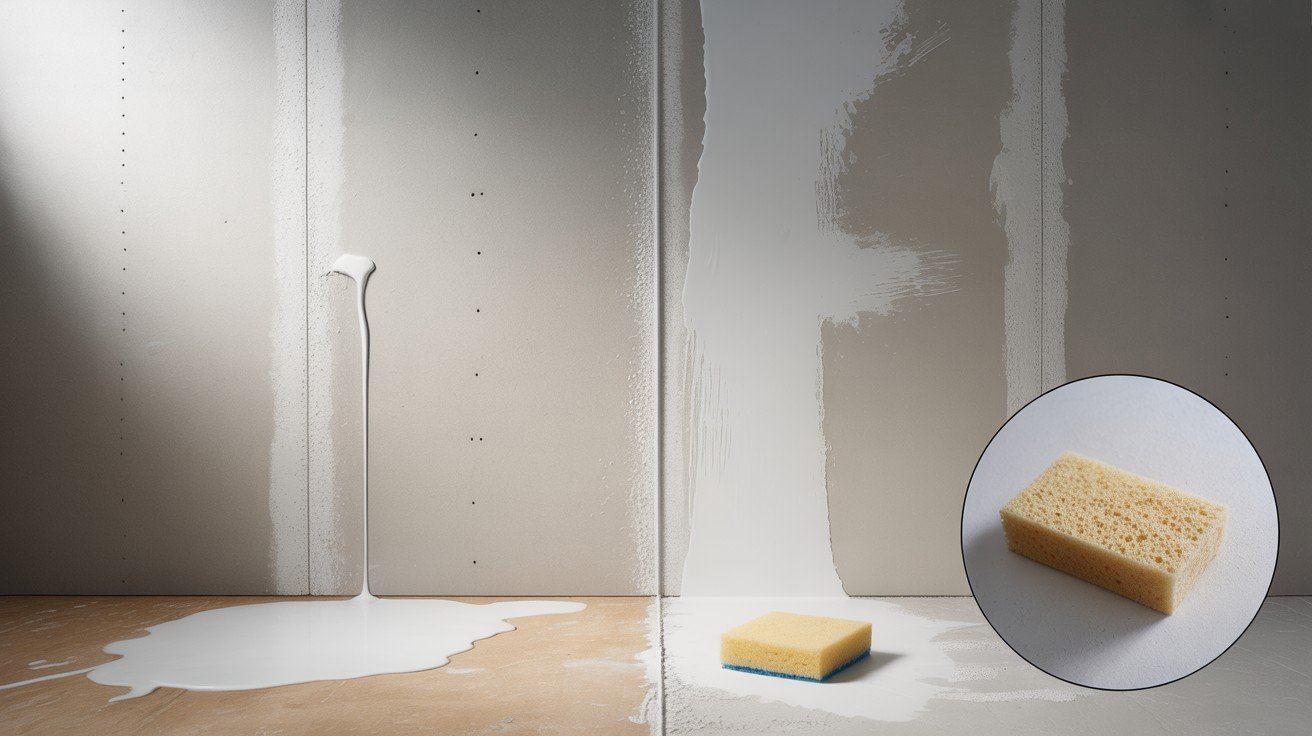
Porous surfaces like raw drywall or unfinished wood absorb moisture from paint, potentially extending drying time compared to non-porous primed surfaces.
Dirty, greasy, or inadequately prepared surfaces create barriers that prevent proper adhesion and can trap moisture, leading to delayed drying and poor finish quality.
E. Number of Coats and Thickness
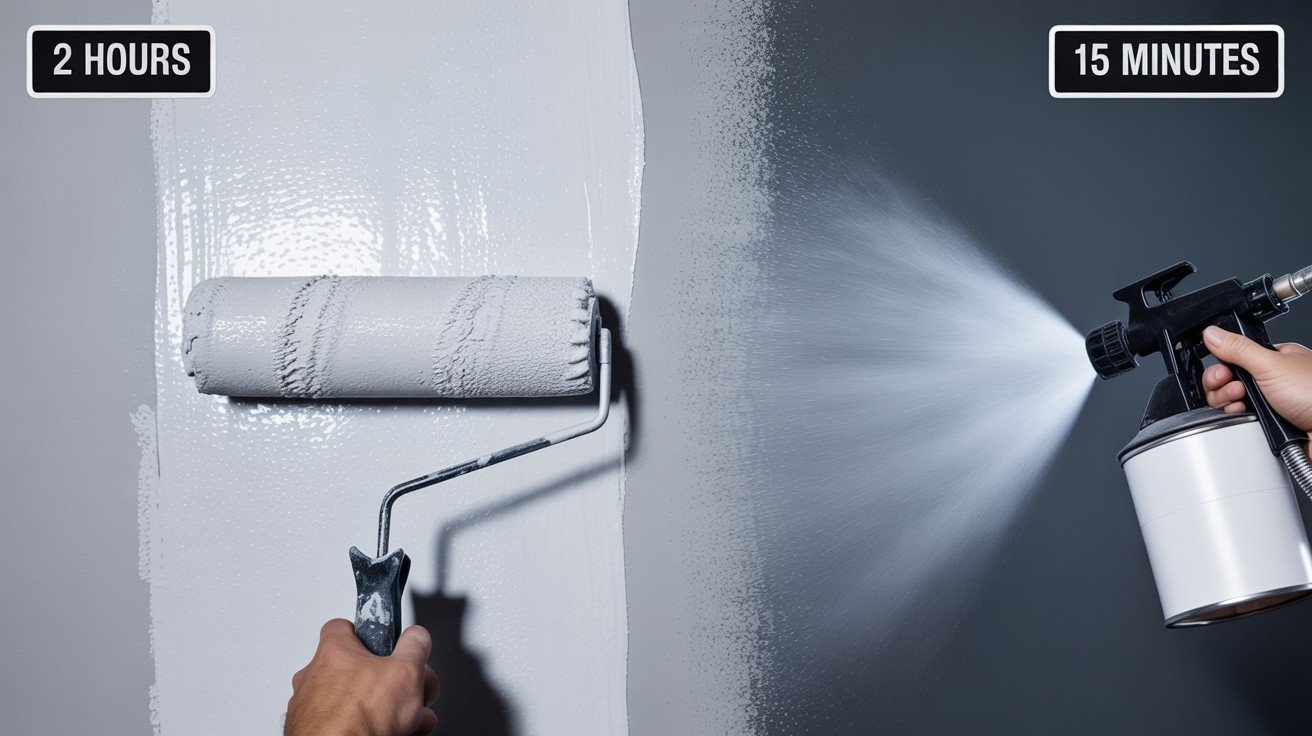
Thick paint applications take exponentially longer to dry as moisture must escape through multiple layers of film.
Sprayed applications typically dry faster than rolled or brushed coats because they create thinner, more even layers with better surface contact.
How to Tell If Paint Is Dry?
Determining when your paint has properly dried requires more than guesswork. Using reliable testing methods prevents premature handling that could damage your finish.
Touch Test vs. Press Test Comparison
|
-Test Method- |
-Technique- |
-What It Reveals- |
-When to Use- |
|
-Touch Test- |
Lightly brush the fingertip across the surface |
Surface feels dry, but may still be soft underneath |
Check for basic surface drying |
|
-Press Test- |
Gently press your finger firmly against the surface for 3-5 seconds |
Tests deeper paint layers for true readiness |
Verify readiness for recoating or handling |
Visual Indicators of Paint Drying
-Shine Dulling- Fresh paint typically appears glossier than its final finish due to moisture content. As solvents evaporate, the sheen gradually reduces to match the intended finish level.
This dulling process indicates the paint film is stabilizing, though complete curing may still require additional time. Watch for a consistent sheen across the entire painted surface.
-Tackiness Reduction- Wet paint feels sticky and can transfer to objects that contact it. As drying progresses, this tacky sensation diminishes until the surface feels smooth and non-adhesive.
Test tackiness carefully in an inconspicuous area to avoid leaving fingerprints or marks on your finished surface.
-Smell Reduction- Paint odors result from solvents and volatile compounds evaporating during the drying process.
Strong chemical smells indicate active drying, while fading odors suggest the paint is approaching complete dryness.
However, some paint types retain mild odors even after full cure, so combine this indicator with physical tests.
Tips to Speed Up Drying Time
- -Use dehumidifiers or fans- Position fans to create cross-ventilation and promote air circulation across painted surfaces, which helps moisture evaporate more quickly.
Run dehumidifiers in humid conditions to remove excess moisture from the air, creating optimal drying conditions even in challenging weather.
- -Apply thin, even coats- Thick paint layers trap moisture and solvents, significantly extending drying time and potentially causing uneven curing.
Use proper rolling techniques and quality brushes to achieve consistent coverage without overloading the surface with excess paint.
- -Choose quick-dry paint formulations- Many manufacturers offer fast-drying versions of their standard paints, featuring modified chemistry that accelerates curing without sacrificing quality.
These specialized formulas can reduce drying time by 30-50% compared to traditional options, making them ideal for time-sensitive projects.
- -Paint during optimal weather conditions- Schedule your painting during moderate temperatures (65-75°F) and low humidity days for fastest results.
Avoid painting during rainy periods, extremely hot days, or when humidity exceeds 70%, as these conditions can double your expected drying time.
Conclusion
Understanding paint drying times is essential for achieving professional-quality results in your interior painting projects.
Remember that latex paints typically dry to the touch in 1-2 hours and are ready for recoating in 4 hours, while oil-based paints require 6-8 hours and up to 24 hours respectively.
Temperature, humidity, ventilation, and surface preparation all play critical roles in determining actual drying times.
The key to success lies in patience and proper planning. Always test for dryness using both touch and press methods, and watch for visual indicators like reduced shine and odor.
When time is a factor, optimize conditions with fans, dehumidifiers, and thin coats rather than rushing the process.
Taking shortcuts often leads to poor adhesion, uneven finishes, and the need to redo your work entirely.
Frequently Asked Questions
Can I sleep in a room immediately after painting?
Wait at least 24 hours before sleeping in a freshly painted room to allow proper ventilation and odor dissipation.
What happens if I apply a second coat too early?
Premature recoating can cause peeling, streaking, and poor adhesion that requires complete surface preparation and repainting.
Does primer affect paint drying time?
Quality primer speeds paint drying by creating a uniform, sealed surface that prevents moisture absorption issues.

